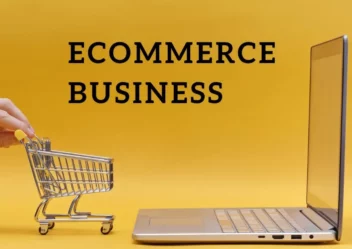Online Selling Sites: Top 20 Platforms for Selling Products
Online marketplaces are necessary if you want to grow your ecommerce business. Firstly, you must find the best online markets for your brand in order to be successful on these platforms. Each online marketplace has its own specifications, product categories, listing fees, and target markets. So, you have to do some necessary study. You should know about the strategies of the online marketplace. As a result, you can understand which ones are most suitable for your products, and what you need to do to get started. Is it too much for you? Don’t be afraid. Because ArrowTheme’ll go through Online Selling Sites: Top 20 Platforms for Selling Products. We’ll go over everything you need to know. Are you ready to begin? Let’s get started.
Claue – Clean and Minimal Magento Theme
We provide an amazing Magento theme with fast and responsive designs. Let’s find out!
What is an Online Marketplace?

An online marketplace is an ecommerce site that sells a variety of products from a variety of vendors. Amazon, eBay, Walmart, Etsy, Alibaba.com, and Google Express are some of the most well-known marketplaces.
These are not all for your options. Because there are also specific online marketplaces like Bonanza, Fruugo, and Hollar, marketplaces for apparel products like Zalando and Fullbeauty, marketplaces for great value products like Tophatter and Tanga, and so on.
In reality, there are currently over 100 online marketplaces. Thanks to them, you can reach out to people performing their online shopping – both domestically and internationally in locations.
Yes, there’s a lot to think about. But keep in mind that you don’t have to go after them all at once. Because all you have to do now is find out which channels are the best fit for your business.
Advantages of Online Selling Sites

Building a New Business on Online Selling Sites
Selling on ecommerce marketplaces is a great way to start if your small business is searching for a quick and easy way to get products in front of customers.
Moreover, before approving you as a third-party vendor, invite-only marketplaces like Walmart and Target will want to verify a history of on-time delivery and excellent reviews. However, Amazon and eBay, will allow you to create a seller account right away.
Adding Marketplaces to Your Online Store.
In case you already have a successful online business. So publishing your products to a few ecommerce marketplaces will help you reach a wider audience. If you don’t include marketplaces in your plan, you might be missing out on sales. Why? Because customers want to have a variety of options when purchasing the same item.
For example with Amazon. 44% of Amazon customers said they always check Amazon’s prices before making a purchase on some other site. Furthermore, more than half of those who visit the marketplace read detailed product descriptions, and 60% go there particularly to read product reviews.
How to Get the Successful Online Marketplace
Optimize the Content of Your Products
There are product listings that customers see and product listings that customers purchase. So what’s the difference? The content of your product. Consumers are usually attracted to make purchases by product titles, descriptions, and categories. You put your effort more, more possibility of your products appearing at the top of marketplace search results.
For that reason, you should spend time finding the best keywords, writing engaging product descriptions. Besides that, you should find the suitable categories, and optimize your photos.
Promote Your Business
Most product pages have advertisements on them. However, these are not the popups and ads that most people reject or skip. If you want to be highly successful on marketplaces, you’ll need to spend some digital marketing. Therefore, it will help bring your products to reach more audiences. (For example, ChannelAdvisor vendors who advertise on Amazon grow at a rate of 63% faster than those who do not.)
Make a Profit Calculation
Each online marketplace includes its own fees, commissions, and regulations for sellers. So you should invest time today to learn about these differences. And then you can make sure that they are profitable channels for you tomorrow.
Automate Your Pricing
You may have set pricing on your online business. But those rates will not be automatically carried over throughout other marketplaces.
Furthermore, keep in mind that customers in marketplaces usually have a variety of options for buying the same item at different prices.
So you’ll have to modify the price of each product depending on the pricing of your competitors. To automate this process, many merchants use algorithmic repricers.
Make Your Shipping Approach More Diverse
Shoppers on the marketplace are looking for both simply rapid, free shipping. Customers increasingly want free delivery. Additionally, 26% will abandon a shopping cart if it takes too long to arrive. The conversation rate will drop unless there is a cost-effective way to meet these requests. As a result, it’s important to have constant access to the most competitive carrier price and delivery options. You can diversify your shipping approach in a number of ways. Some sellers prefer to use programs like Amazon FBA. Besides that others use third-party logistics companies like ShipBob or ShipStation.
Many businesses use a combination of ways. Because they make sure that each order is done as quickly as possible and also at the lowest cost possible. Besides that, you might hire private carriers like UPS and FedEx for some orders and USPS for others in this situation.
TOP 20 Online Selling Sites for Your Products
Top US Online Selling Sites

Amazon
One of the most important features of selling on Amazon is having access to the company’s 100 million Prime subscribers. Amazon is a treasure for brands and retailers. Because these customers spend an average of $1,400 each year on the site. There are lots of other factors to consider when you begin selling on Amazon. However, the important decision for selling plans is best for your business.
For most third-party sellers who want to get started right away, Amazon’s individual selling plan is very good. However, if you sell collectibles or fine art, you need to have a professional plan. Besides that, you also have to seek approval.
The professional selling plan costs $39.99 per month and includes the following features:
- Referral fees and variable closing fees
- per-item selling fees for categories.
- With an individual selling plan, you’ll pay $0.99 per sale plus category-specific selling expenses.
eBay
eBay is a wonderful choice. In case you want to take advantage of a large global market share. This marketplace connects you to 168 million active customers from around the world. You’ll have more opportunities to expand and grow with 190 markets throughout the world.
When selling on eBay, there are different kinds of selling costs to consider:
- When you create a listing, you pay an insertion fee
- As your item sells, you pay a final value fee.
More importantly, there are no set-up, monthly, or annual costs to be concerned about.
Handshake
Handshake is a commercial marketplace that makes it simple for suppliers and retailers to communicate. Fitness and yoga, jewelry, pets, and food and beverage, you’ll find these unique products to sell easily. The Handshake team selects each supplier by hand.
Handshake is used by both online and traditional retailers. Apply to sell on Handshake if your company sells unique products in large quantities (or if you plan to sell wholesale).
More importantly, Handshake has a Shopify integration. Traditional wholesale marketplaces require manual processes and many CSV uploads and excel sheets. However, this integration allows shop owners to manage inventory, monitor business, and fulfill orders all in one site.
Bonanza
Bonanza is a Seattle-based online marketplace. This is a Seattle-based online marketplace that is rapidly expanding. It’s a new website. But it’s quickly becoming a popular eBay competitor. According to SimilarWeb, it has over 5.1 million monthly visits and allows you to sell almost anything.
Bonanza has more unique and handmade goods for sale than eBay. But it has less branded names than Amazon. You may sell the most recent Nike Air Max model or a handmade necklace. Buyers can quickly add items to their cart with a set price or use the platform to negotiate a rate with you.
You will not be paid anything to list your products on Bonanza’s website. After you sell, it just takes a little proportion of your total transaction price. Because many Bonanza sellers also have online businesses, you may link Bonanza with systems like Shopify. So it is easier to manage and sell products.
Ruby Lane
Ruby Lane is a newer online store for antiques and vintage items. In a survey of EcommerceBytes, Ruby Lane was ranked the best selling site for 2019. For categories such as vintage and collectibles, dolls, and jewelry,…selling on Ruby Lane allows you to reach out to buyers. Fees and payments are also simple to understand. It’s completely free to create an account and list your products. However, you must pay a $54 monthly maintenance fee if you want up to 50 products. The charge changes when you list more things on the platform. In addition, you have to charge a 6.7% service fee for Ruby Lane, maximum at $250. It is based on the total purchase order.
Etsy
Etsy is perfect for homemade and antique goods. Maker-developed manufactured goods were added to the marketplace in 2015, but only for a limited number of accounts. Etsy had over 60 million buyers since about Q2 2020,
You have to pay a $0.20 listing fee for each product you want to sell on Etsy. Every four months, these listings expire. So you have to pay an extra $0.20 in case your product doesn’t sell and you update the listing. Furthermore, you’ll be paid a transaction charge of 5% of the display price and the amount you pay for shipping and gift packaging.
Etsy is a perfect site to sell your items if you’re new to ecommerce. You’ll have connection to an active buyer network, a pop-up store, and promotion tools. Therefore, it helps you promote your brand on the platform.
Chairish
If you want to sell high-end home furnishings and decor, you should consider Chairish. It only takes a few minutes to sell a product (for free) on Chairish. Moreover, you get back from 70% to 80% of the selling price.
The greatest feature about Chairish is that it’s completely free. However, you can upgrade to the Elite plan at $149 a month. You add your items, and then Chairish’s team looks over them to make sure they match the marketplace’s requirements. After that, they will edit and publish your product photographs for you. When you sell on Chairish, they also handle shipment. So you don’t have to bother about logistics. This is a good marketplace to use if you have design-oriented furniture or home decor for selling online.
Swappa
Swappa is a reputable buy and sell website for phones, computers, cameras, and more. It can help you turn your technology into cash. Swappa is legal because it carefully verifies the products that are sold on the platform. It doesn’t accept useless products. So everything you sell has to be in good order. Furthermore, PayPal protects each payment.
There are no costs for creating a listing. But you can pay $5 to have your products promoted (similar to an ad). Swappa only charges flat fees that are included in the listing price. When you sell something, the buyer pays the charge together with the transaction. Swappa charges some of the lowest costs in the trade. For example, Swappa will only charge the customer $15 if you sell a $350 phone.
Local Online Selling Sites

Facebook Marketplace
Facebook Marketplace is a site on Facebook. Users can find, buy, and sell products. Every month, more than one-third of the population visits the Marketplace. Therefore, it provides a great chance for vendors to reach a large audience. It’s absolutely free to list, and there are no fees charged by Facebook. But there are some rules to follow if you want to sell on this platform
Furthermore, Facebook has also worked with platforms such as Shopify. Thanks to it, retailers can display their inventory, advertise goods, and discover new clients.
Craigslist
Craigslist was one of the first online marketplaces. Craig Newmark started it in 1995 as an email distribution list for friends to share local events in the San Francisco Bay Area. Moreover, it has now extended to 700 cities in 70 countries. It’s free, simple, and clear. It’s also basically a large local forum with a lot of information. Additionally, this is an online marketplace with a higher level of risk. Scams can easily occur due to the platform’s “hands-off” policy to buying and selling. Therefore, if they do, you won’t get any assistance from the company.
However, Craigslist is a popular selling platform for local buyers and sellers. Because ot allows you to meet in person to complete a transaction.
Nextdoor
Because it focuses on community selling, Nextdoor is similar to Facebook Marketplace and Craigslist. It allows people to post about what’s going on in their area.
Moreover, Nextdoor also has a free online marketplace where you may sell your products. There are no listing costs. However, you must meet customers in person, similar to Facebook Marketplace. It also feels safer. Because you must first create an account before using the platform.
VarageSale
VarageSale is a garage sale app that allows you to buy and sell items. It was founded in Toronto. Its user profiles are built on real identity. Therefore, before you can purchase or sell, you must go through a manual testing process. Before making a purchase, buyers can look at seller reviews and message them to connect. They may use the app to ask inquiries, make purchases, and arrange pick-up. On VarageSale, people sell everything from furniture to apparel to shoes and more. Furthermore, members can also purchase and sell for free on the app.
The Best International Online Selling Sites

AliExpress
AliExpress belongs to Alibaba’s cross-border ecommerce marketplace. It was founded in 2010. However, now it has users from over 230 countries and almost 20 million daily visitors. Users of this online site can sell to individuals or businesses. More importantly, they can produce products or add an AliExpress dropshipping model into their online stores.
AliExpress gets from 5% to 8% of commission fees from each sale. But it depends on your product categories. Furthermore, you don’t need to pay any costs for selling on the platform, such as overhead or arrangement fees.
Taobao
According to Digital Commerce 360, Taobao started as an online selling site similar to eBay in 2003. However, it has grown to become one of the largest online selling sites.
Taobao has approximately 70 million MAUs since around September 2020. It also had transacted more than $526 billion in gross merchandise volume in the financial year 2020.
However, if you want to sell goods that aren’t available on Taobao or AliExpress, check out our detailed list of Chinese online marketplaces.
OTTO
Otto is Germany’s second-largest online marketplace. It is suitable for fashion and lifestyle items. Over 90% of OTTO’s products are now sold online. It has branded items as well as items from third-party sellers. With over 9.4 million active clients, this marketplace is just second to Amazon in the country.
Rakuten
Rakuten is a huge Japanese marketplace. This offers ecommerce, banking, communications, and other services. PayPay Mall is its competitor which has greater monthly visitors. However, this site is the market leader in sales. You can sell in a variety of product categories, such as clothing, books, sports, and more, like on Amazon.
This site now has over 50,000 businesses and 115 million customers worldwide. Businesses who want to sell on Rakuten must be registered in the United States or Japan. Or you have to apply through a service partner.
Mercado Libre
Mercado Libre is Latin America’s most popular ecommerce platform. It serves over 18 nations, ranging from Mexico to Argentina.
According to Mercardo Libre’s recent investor report, the brand’s combined revenue (ecommerce and Fintech) exceeded $4.3 billion in Q3 2020. In the same quarter, it generated almost $18.2 billion in gross merchandise volume and sold nearly 600 million goods. On the site, sellers can sell a variety of products from 20 main categories and 123 subcategories.
Flipkart
For starting, Flipkart was an online bookstore in 2007. After that, it has grown to become India’s largest online marketplace. Clothing, home goods, foods, and sporting goods are among the goods that retailers can sell on Flipkart. This online site continues to top India’s ecommerce market share. According to current news, Flipkart accounted for 66% of the gross product value recorded by ecommerce businesses during the mid-October to mid-November 2020 holiday season. This is the perfect for your business if you want to enter into the Indian market.
MyDeal
MyDeal is an Australian online marketplace with over one million products in 3,500 categories and over 5.4 million monthly visitors. This site doesn’t sell products from third-party merchants instead of its own products.
While you can sell things in a variety of categories on the site, furniture, homewares, and other heavy items are the most popular. Sellers must manage their own delivery or use an outside logistics business because MyDeal does not provide fulfillment services.
Conclusion
Finally, this is all about Top Online selling sites in the world. If you have any questions, don’t hesitate to enter your questions into this CONTACT FORM. ArrowTheme Support Team will give you the solution as soon as possible. More importantly, don’t forget to find out more blogs for getting useful information. In case you are looking for the best solutions for your eCommerce.
Contact US – ArrowTheme:
– Email: [email protected]
– Facebook: Facebook.com/ArrowThemeTeam
– Website: ArrowTheme.com
Read more: Magento 2 B2B vs B2C Ecommerce: Which Fits Your Business?



